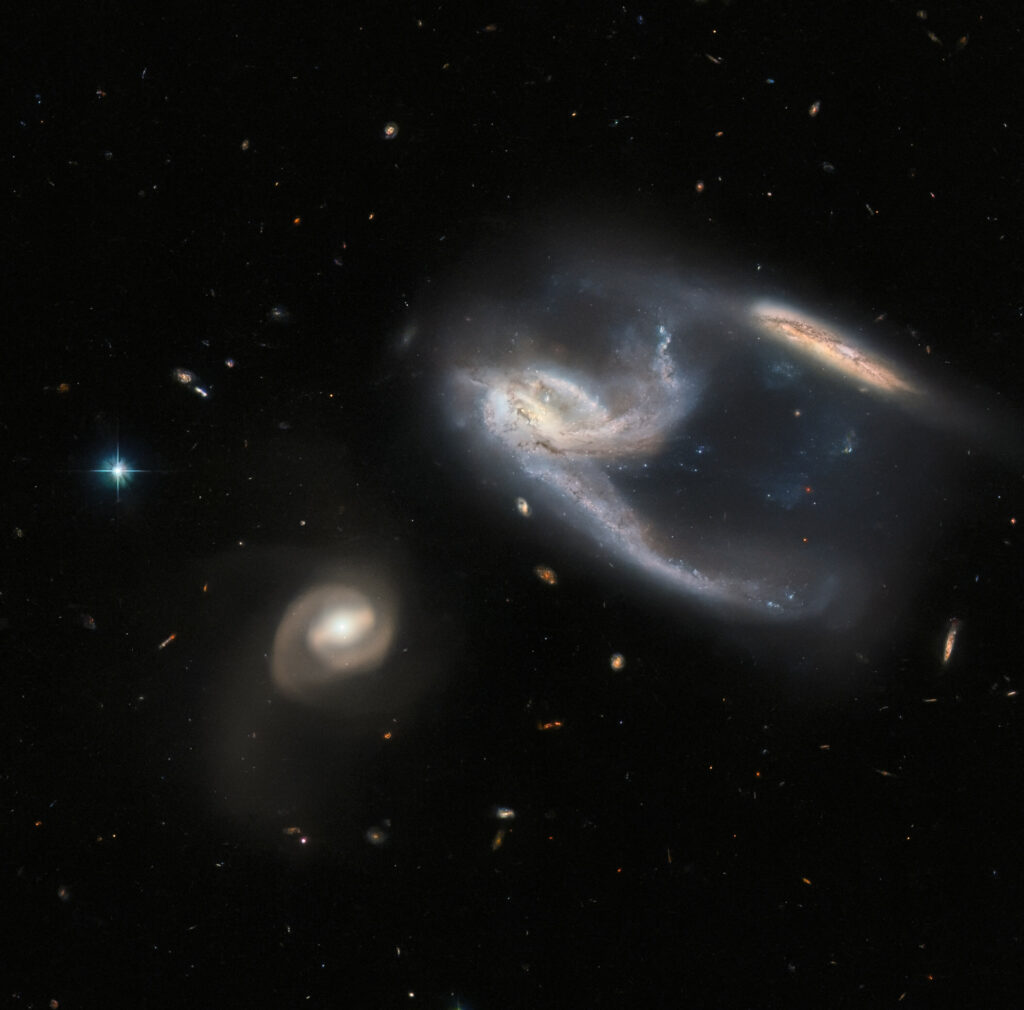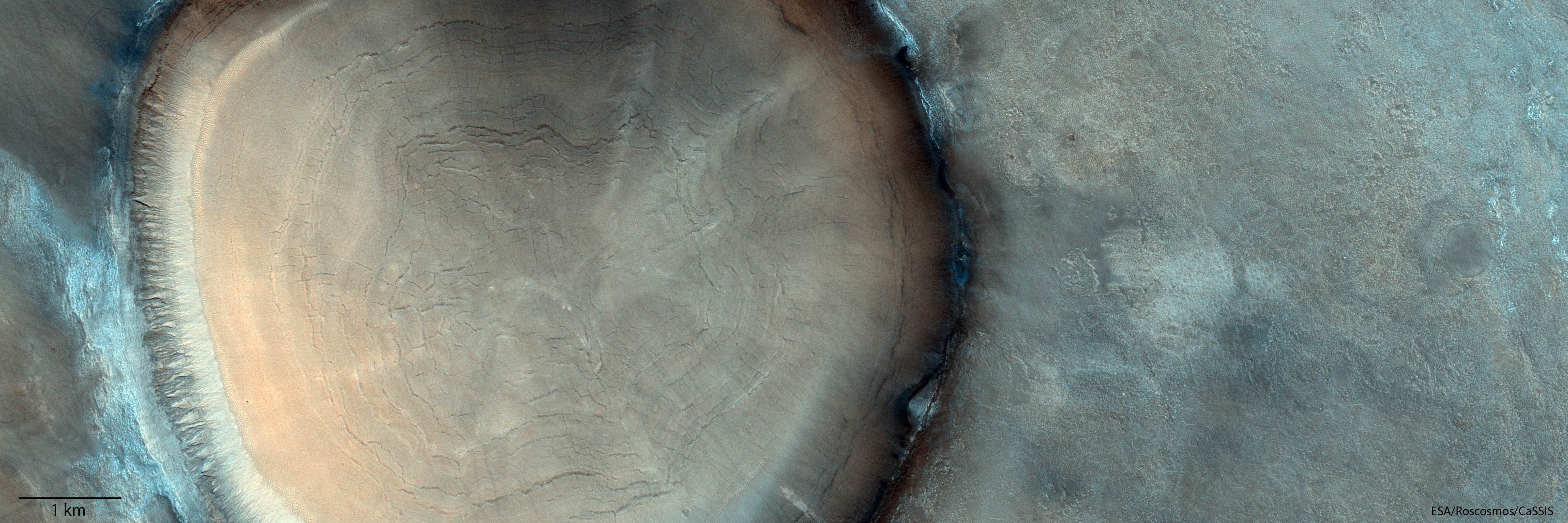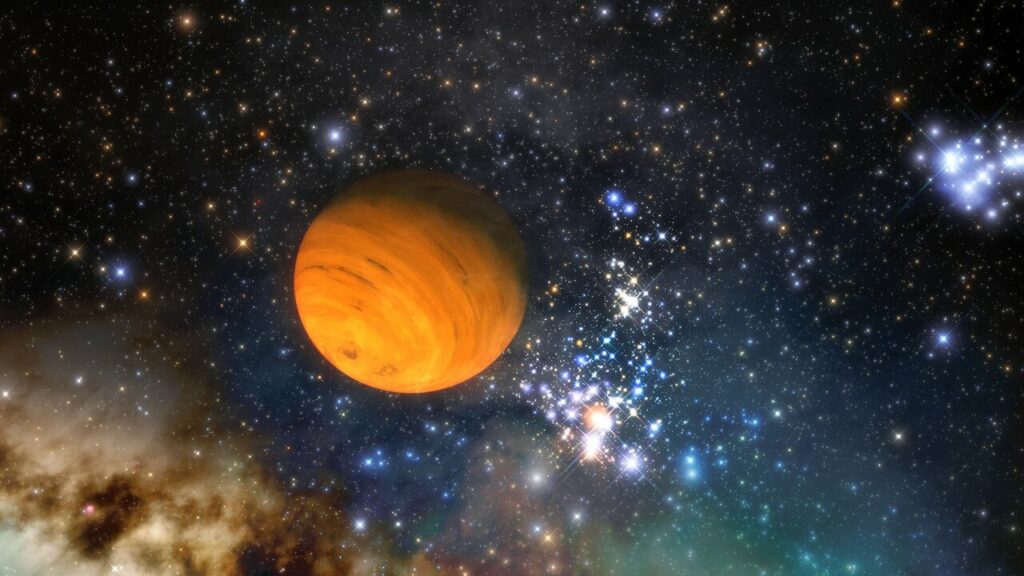After several weather-related (and one cruise ship-related) delays, SpaceX finally launched the COSMO-SkyMed Second Generation Flight 2 (CSG-2) satellite for the Italian government. Plus, some beautiful images to start your week and an interview with Dr. Núria Miret-Roig about free-floating planets.
Podcast
Show Notes
Finding shapes in the galaxies
- NASA image release
A crater pretending to be a tree stump
- ESA image release
Star-forming region looks like a chameleon?
- NASA image release
SpaceX launches Italian radar satellite
- CSG-2 mission page (SpaceX via archive.today)
- Booster 1053 info (Reddit)
- COSMO-SkyMed Second Generation (CSG) Constellation (eoPortal)
- Applications of Synthetic Aperture Radar Satellites to Environmental Monitoring (CSIS)
New opportunity for grade schools to use ISS research
- ISS National Laboratory press release
Free-floating planets found in Milky Way
- Isaac Newton Group of Telescopes press release
- NOIRLab press release
- Subaru Telescope press release
- “A rich population of free-floating planets in the Upper Scorpius young stellar association,” Núria Miret-Roig et al., 2021 December 22, Nature Astronomy
Transcript
Hello and welcome to the Daily Space. I am your host Dr. Pamela Gay.
And I am your host Beth Johnson.
And we’re here to put science in your brain.
Welcome to February! We have survived the first month of 2022 and the 23rd month of 2020. To honor how we are all feeling of late, we’re going to start the show with pretty space images.
From there, we’ll look at a launch that got delayed to the point of hilarity as we kept trying to ninja stream it all weekend, finally launching on Monday.
Plus, we’ll be joined by our guest, Dr. Núria Miret-Roig, at the end of the show to talk about rogue planets. We’re really excited to have her here.

No lies – I am super glad we do a space science show because at one point in my career I wanted to be a journalist who covered all the news, and right now, most of the news is just not full of goodness, beauty, and light.
But thanks to the Hubble Space Telescope and ExoMars Trace Gas Orbiter, we’re going to fill this segment with things that are simply beautiful.
First up is a set of galaxies that folks at the Space Telescope Science Institute are claiming look like a bowling ball and Star Trek starship. Imaged as part of Julianne Dalcanton and company’s interacting galaxies survey, two of these galaxies are clearly former spiral galaxies that are interacting and are now very disturbed systems. If you tilt your head and look just right, you may even say they look like the USS Enterprise.
And yes, researchers spend more time than we should admit to saying, “Hey, does this look like a [random object] to you?”
The third galaxy, farther away, is nice and round, and while there are hints of gas coming off it, researchers remain unclear if this system is interacting with the other two – the Enterprise pair – or if it is just an innocent bystander. The research papers on this field are still in progress, and for now, all we have is an image release from NASA. It is an image we can all enjoy and that, like a movie preview, can get us – or at least me – excited about the full-length feature that is yet to come.
I totally buy that that is the USS Enterprise. Just as I buy that this next image looks like a tree stump, down to the rings. There are lots and lots of seemingly concentric rings, a dark outer rim… and yes, the entire image says tree stump.
Except that it’s not a tree stump. It’s a crater on Mars.
This fantastic image was taken by the CaSSIS camera on the ESA/Roscosmos ExoMars Trace Gas Orbiter spacecraft back in June of last year. It’s located in a region called the Acidalia Planitia in the northern hemisphere. And, just like tree rings, the rings in this crater tell the history of its creation and life.

There are deposits in the middle of the crater that likely have water-ice in them, and as the seasonal temperatures change, that water-ice undergoes expansion and contraction, causing fractures to form in the surface. Those water-ice deposits were laid down much earlier in Mars’ history when the tilt of the planet’s axis was greater and season differences were larger. Mars’ axial tilt has changed a lot over millions of years, affecting how water and ice deposits were distributed on the surface, leading to a lot of the features we see today.
And today, I guess we see a tree stump?
Did I mention we spend a lot of time saying, “Hey, does this look like a [random object] to you?”
Seriously, we have been doing this for ages and will continue doing this as long as humans keep being humans.

A lot of times, the names objects have been given require you to look at objects through lower power scopes that are similar to those being used when the objects were being named. The Owl Nebula looks like an adorable little owl until you zoom in, and it is clearly just a planetary nebula.
Through a 16” telescope, the Tarantula Nebula looks disturbing like there is a spider looking back at you through the eyepiece, and on first seeing it, I had to just remind myself “it’s just hot gas and baby stars.”
Somewhere between the “awww, it’s an owl” and the “ack, that’s very spidery” is the Chamaeleon Cloud. Recently highlighted images from the Hubble Space telescope don’t look as much like a chameleon as the low-res images, but again, if you squint, you can see where the eye is at least. This particular nebula is reflecting toward us the blue light of young stars.
The larger of these stars can be seen illuminating butterfly-shaped glows of gas. One of these is objects, called a Herbig-Haro object, shines at the bottom of this image, which you can download from our website, DailySpace.org.
This image was initially taken so researchers can search for brown dwarf stars. While not identified in this image, the Hubble release says that six of these failed stars, which are 10-90 times the mass of Jupiter, were located in this image.
While this may look like a single, stunning image, that is just good processing. According to the image release: This 315-million-pixel composite image is comprised of 23 observations made by Hubble’s Advanced Camera for Surveys. Gaps between those observations were filled by 20 Wide Field and Planetary Camera 2 images. Any remaining gaps were filled with ground-based data from ESO’s VISTA VIRCAM.
A link to this massive, full resolution image is also on our website.
Sadly, we couldn’t do an entire show on just pretty images, but we do have a picturesque launch to turn to next, as Erik Madaus brings us the cruise-ship-delayed launch of the CSG-2 mission.

On January 31 at 23:11 UTC, after four previous attempts, a SpaceX Falcon 9 finally launched the CSG-2 mission from SLC-40 at the Cape Canaveral Space Force Station in Florida. After liftoff, the Falcon 9 headed down the Florida coast to insert the satellite into a 97.5-degree inclination sun-synchronous orbit. The twilight launch and polar trajectory led to an amazing view on the ground tracking cameras at the end of the first stage burn.
The first three attempts were scrubbed because of bad weather, while the fourth was scrubbed because a cruise ship entered the restricted area offshore. The usual restricted areas for both planes and boats were different for this launch because of the polar trajectory, but the changed map was posted several days in advance.
Because the payload was so light, only about two metric tons, the Falcon 9 first stage performed a Return To Launch Site type landing, landing at Landing Zone 1 about nine minutes after launch. This is a rare type of landing since they usually land the boosters on their barges, but this is the second Return To Launch Site landing this month.
The second stage coasted for about an hour before performing a second burn and then deploying the satellite into orbit.
Booster 1052 is unique as Falcon 9 boosters go, even though this is only its third flight. Its first two launches were in 2019 as the starboard side-booster on the Arabsat 6A and STP-2 Falcon Heavy launches. The Falcon 9 first stages have been designed to be interchangeable between Falcon 9 first stage and Falcon Heavy side-boosters by switching just a few components around since the Block 5 version was introduced. However, until now, no booster had been through this process.
CSG-2 or COSMO-SkyMed Second Generation Flight 2 is the second satellite of a planned constellation for the Italian government. CSG-2 is a synthetic aperture radar satellite, a type of active imaging radar used for acquiring images at all times of day, including “all but the heaviest rainfall”.
Radar satellites work kind of like sonar, sending out their own energy and recording the reflection. Many reflections are combined to build an image. Optical satellites, on the other hand, record light from the Sun reflected off the Earth. This quality makes them very useful for military applications, but radar satellites can also be used for agriculture and disaster monitoring such as floods, oil spills, and wildfires. Like the first generation, CSG-2 has dual military and civilian use.
CSG-2 has a number of different modes, each of which offers different resolutions and image sizes. Military users have access to a very high-resolution mode that provides imagery with pixels smaller than 80 by 80 centimeters, the highest resolution for civilian users. The coarsest resolution available has pixels that are 6 by 20 meters in size. Depending on the size of pixels, the ground coverage of an image can vary from a few kilometers on a side to large areas roughly 200 by 2,500 kilometers.
The CSG constellation will be finished by two launches of the Arianespace Vega-C rocket in the next few years.

Yesterday, the Center for Advancement of Science In Space (CASIS), the organization that runs the science on the U.S. segment of the International Space Station (ISS) announced a new program to get students of all grade levels more access to the science conducted on the station.
The program is called Expedition Space Lab and consists of a series of free lessons in four different areas related to research conducted on the ISS: earth and space sciences, engineering and technology, life sciences, and physical sciences. Elementary, middle, and high school students get their own set of activities in these four areas.
An example of one of the activities is growing a plant in the classroom and following along with a plant growing on the ISS to see the differences in how a plant develops in microgravity. Beyond the free resources, the CASIS program also offers additional resources for a cost. Educators can apply for a grant to cover the cost of purchasing Expedition Space Lab resources.
According to Ray Lugo, Principal Investigator and Chief Executive Officer for the ISS National Lab: We seek to inspire our nation’s youth and achieve great results through the implementation of Expedition Space Lab by reaching even more students, encouraging them to think about what is possible when we dream big and look up.
Interview

Recently, we talked about a paper published in Nature where researchers detailed the discovery of at least seventy free-floating planets in a region of the Milky Way known as the Upper Scorpius OB stellar association.
Free-floating planets are those planets that are not currently orbiting a star. We used to call them rogue planets, as they had gone rogue from their stellar system of origin, but since we don’t know how true that particular description is, the term was changed to ‘free-floating’. Of course, since these planets are not orbiting a star, they are also not reflecting or blocking a star’s light, nor are they gravitationally influencing a star’s orbit. Dark, cold objects are difficult to detect.
And there could be as many as 170 planets hidden within the twenty years of observations the team analyzed.
Joining us now is Dr. Núria Miret-Roig, a post-doctoral researcher at the University of Vienna and the lead author of that paper in Nature.
Thank you for joining us, Dr. Miret-Roig, and welcome.
[Transcript unavailable]
It’s been great having you here today, Dr. Miret-Roig. Thank you again.
This has been the Daily Space.
To all of you watching, this conversation ran longer than we can air here on NowMedia. You can catch the interview in its entirety on our website, DailySpace.org.
While you’re there, check out our show notes to find more information on all our stories, including images. As always, we’re here thanks to the donations of people like you. If you like our content, please consider joining our Patreon at Patreon.com/CosmoQuestX.
Credits
Written by Pamela Gay, Beth Johnson, and Erik Madaus
Hosted by Pamela Gay, Beth Johnson, and Erik Madaus
Audio and Video Editing by Ally Pelphrey
Content Editing by Beth Johnson
Intro and Outro music by Kevin MacLeod, https://incompetech.com/music/


 We record most shows live, on Twitch. Follow us today to get alerts when we go live.
We record most shows live, on Twitch. Follow us today to get alerts when we go live.